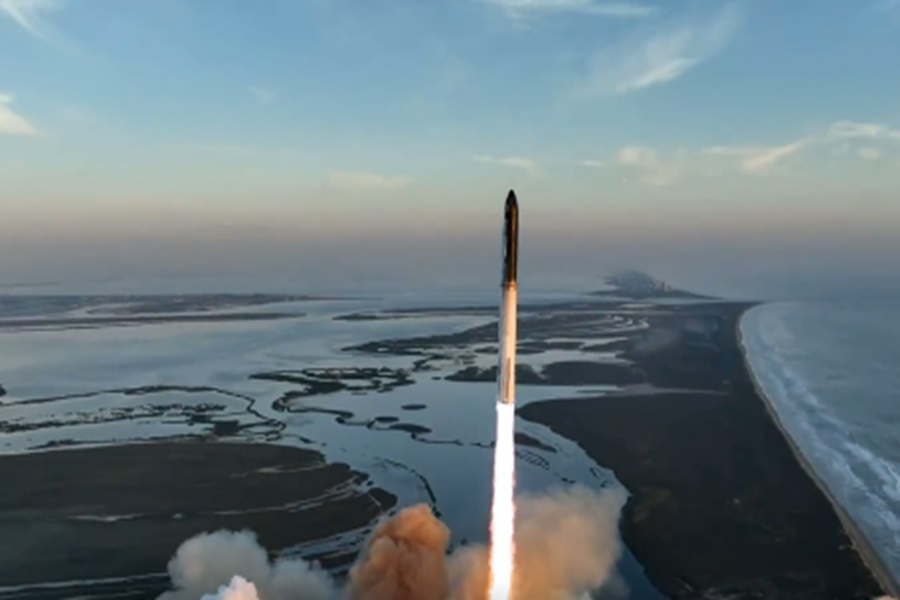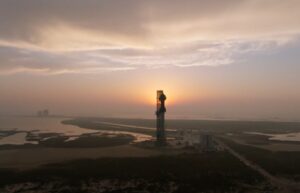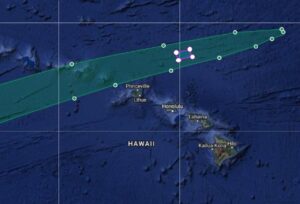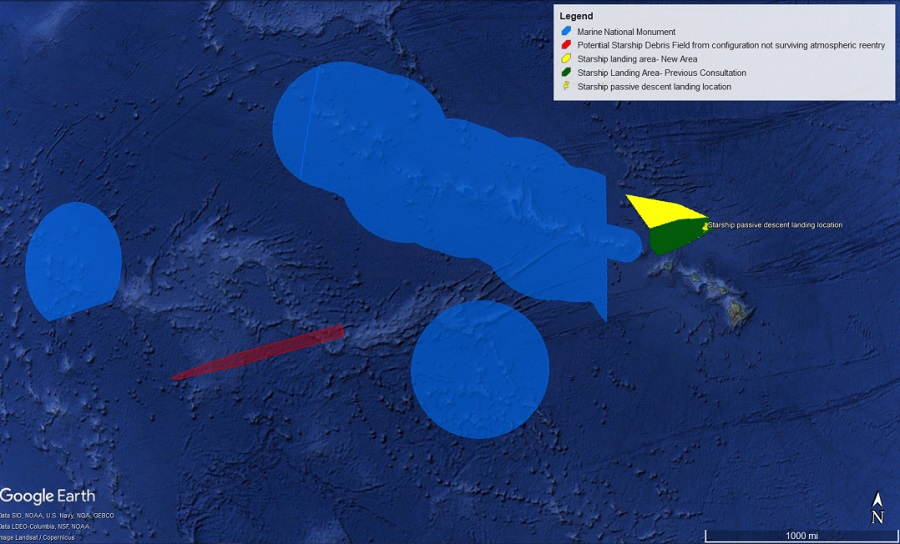
SpaceX’s giant new rocket successfully cleared its south Texas launchpad after launching at 7:02:55 am Central Time / 3:02:55 am Hawaii Time, but after a successful separation from its primary booster, a technical issue surfaced and Starship was destroyed somewhere high above the Gulf of Mexico. Had the spacecraft successfully got into orbit, it would have traveled around the globe and eventually would have had a similar explosive ending just north of Hawaii.
The Starship successfully separated from its booster, but a series of unfortunate events unfolded from that point on in this historic test flight mission. Shortly after separation, the booster encountered an unexpected explosion. That explosion happened far from Starship which continued to head up into space. However, at some point beyond that, SpaceX says the self-destruct system was fired on the upper stage towards the end of its burn. These explosions happened well above the Gulf of Mexico in an area that was cleared of boat traffic ahead of the launch time. SpaceX has provided no updates with specifics as to what exactly happened as of press time. It is not yet known how quick SpaceX could prepare another test flight or how quick the FAA would authorize another launch license for such a test.

“White it’s not happening in a lab or a on a test stand, this is absolutely a test,” SpaceX announced on the X platform. “What we’re doing today will provide invaluable data to continue rapid development of Starship. This rapid, iterative development approach has been the basis for all of SpaceX’s major innovative advancements including Flacon, Dragon, and Starlink.”
Had both the launch and test flight been completely successful, it would have ended with an explosive crash landing near Hawaii just 90 minutes after the launch. Due to the early morning time of the launch, it was possible the rocket returning to Earth and its explosive ending near Hawaii would have been visible in portions of the Aloha State.
For this orbital test, SpaceX attempted to nearly circle the world with Starship and not much else; for this second flight test, the team was not planning to attempt a vertical landing of Starship or a catch of the Super Heavy booster. Such attempts will be made at future test launches.

As part of a slew of documentation released by the FAA when SpaceX’s initial license to launch Starship was issued, included in the documentation was a re-evaluation of the 2022 “Final Programmatic Environmental Assessment for the SpaceX Starship / Super Heavy Launch Vehicle Program at the Boca Chica Launch Site in Cameron County, Texas.” That document, authored by Stacey Molinich Zee, was released on April 14, 2023. This Programmatic Environmental Assessment or PEA for short details numerous specifics of the launch plans, including possible environmental impacts at the launch site around Texas and the planned splashdown site around Hawaii.
According to the updated PEA, from a height of about 75 miles, Starship would begin its passive descent back to Earth over the Pacific Ocean. During this descent, residual rocket fuel amounting to roughly 10 metric tons of Liquid Oxygen (LOX) and 4 metric tons of methane would remain with the spacecraft to the surface. The PEA says the residual fuel “represents approximately 1.1 percent of the total fill levels for the Starship main tanks.”
“Starship would impact the Pacific Ocean intact, horizontally, and at terminal velocity, and the impact would disperse settled remaining propellants and drive structural failure of the vehicle. The structural failure would immediately lead to failure of the transfer tube, which would allow the remaining LOX and methane to mix, resulting in an explosive event,” the PEA describes.
While recovery of Starship isn’t expected due to the explosive event planned, SpaceX resources will attempt to retrieve any large debris pieces from the ocean.
“Following the Starship breakup, SpaceX would have a vessel in the area of highest likelihood of debris that would identify large debris for salvage. SpaceX would use the vessel to survey the debris field for approximately of 24 to 48 hours using visual survey in the day and onboard vessel radar at night) depending on the outcome of the breakup,” the PEA says. “The initial survey area would be determined based on last known data location point received from the telemetry on the vehicle upon splashdown. Weather and ocean current data would be used to further characterize the debris field as the operation is conducted.”
During the debris recovery mission, SpaceX will coordinate with the United States Coast Guard on their endeavors.
“If debris is generated, SpaceX expects the majority of the Starship debris would sink because it is made of steel and will have sufficient mass to sink to the seafloor,” the PEA adds. Debris is expected to sink within the expected landing location which is 240 nautical miles east of the Papahanaumokuakea Marine National Monument; SpaceX says any debris is not expected to drift into the Papahanaumokuakea Marine National Monument. However, they caution that some lighter items not made of steel, such as composite overwrapped pressure vessels, may float for a short period before sinking after becoming water logged.
SpaceX also adds that though not expected and unlikely, if there is floating debris found by the vessel during the debris field survey, they would sink or recover any floating debris before it could drift into the Papahanaumokuakea Marine National Monument by physically removing the item or puncturing the item to cause it to sink.

The PEA also evaluated potential impacts to marine life around Hawaii from such an explosive return to Earth of Starship. A consulting biologist explored marine mammals and sea turtles that could be in the splashdown zone; these creatures include assorted whale species, the Hawaiian Monk Seal, assorted turtle species, the Giant Manta Ray, and the Oceanic Whitetip Shark. Based on their assessment of marine life being “harassed” or injured as a result of this impact, they project less than 1 marine life would be impacted in this zone.
In the latest FAA approval documents, the FAA focused on the environmental impacts on the area around the launch site. It is assumed that nothing has changed to possible environmental impacts near Hawaii.
Starship’s first flight test provided numerous lessons learned that directly contributed to several upgrades to both the vehicle and ground infrastructure to improve the probability of success on future flights. According to SpaceX, the second flight test will debut a hot-stage separation system and a new electronic Thrust Vector Control (TVC) system for Super Heavy Raptor engines, in addition to reinforcements to the pad foundation and a water-cooled steel flame deflector, among many other enhancements.
SpaceX wrote, “As we venture into new territory, we continue to appreciate all of the support and encouragement we have received from those who share our vision of a future where humanity is out exploring among the stars!”
SpaceX wrote on X the day before launch, “Recursive improvement is essential as we work to build a fully reusable transportation system capable of carrying both crew and cargo to Earth orbit, help humanity return to the Moon, and ultimately travel to Mars and beyond.”
SpaceX is planning missions to the Moon and Mars but until Starship has a successful orbital flight, a firm timeline for those missions won’t be disclosed.